The trio met around 1897 while attending Howard Pyle’s famed School of Illustration at the Drexel Institute in Philadelphia. Sharing a studio space during their studies, the three soon formed a tight personal and professional bond. When their careers began to flourish and they won a commission to collaborate on a mural project, the three took residence together and rented the old Red Rose Inn, located just outside the city in Villanova. They shared this idyllic 200-acre suburban estate with fellow friend Henrietta Cozens, who managed the household of the “Red Rose Girls.” At a time when women were generally expected to pursue the arts as a hobby, and to prioritize marriage and family over career, the four women vowed to never marry and to spend their lifetimes living together as what they referred to as the “COGS family” (an acronym derived from the first letters of each of their last names).
The group lived happily together at the Red Rose Inn from 1901 to 1906, and later at their “Cogslea” estate in the Mount Airy area of Philadelphia from 1906 to 1911. Each artist achieved commercial success and certainly benefited from the daily support and feedback that naturally occurred from having peers in such close proximity. Green eventually married in 1911, at which point the group was effectively disbanded, though they would remain lifelong friends.
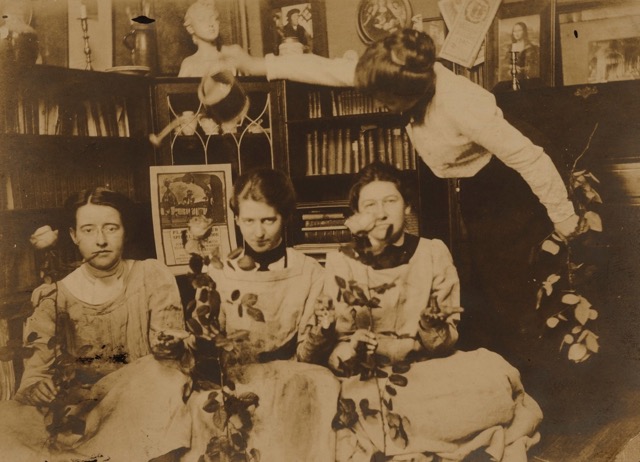
Jessie Willcox Smith
Jessie Willcox Smith was one of the most popular illustrators of the twentieth century, and her work graced the pages of children’s books and leading publications like Ladies’ Home Journal, Collier’s, and Good Housekeeping. Though Smith never married and had no children of her own, she had a keen ability to render sensitive depictions of children, adeptly capturing their subtle expressions and gestures to form a poetic and romanticized vision of childhood.
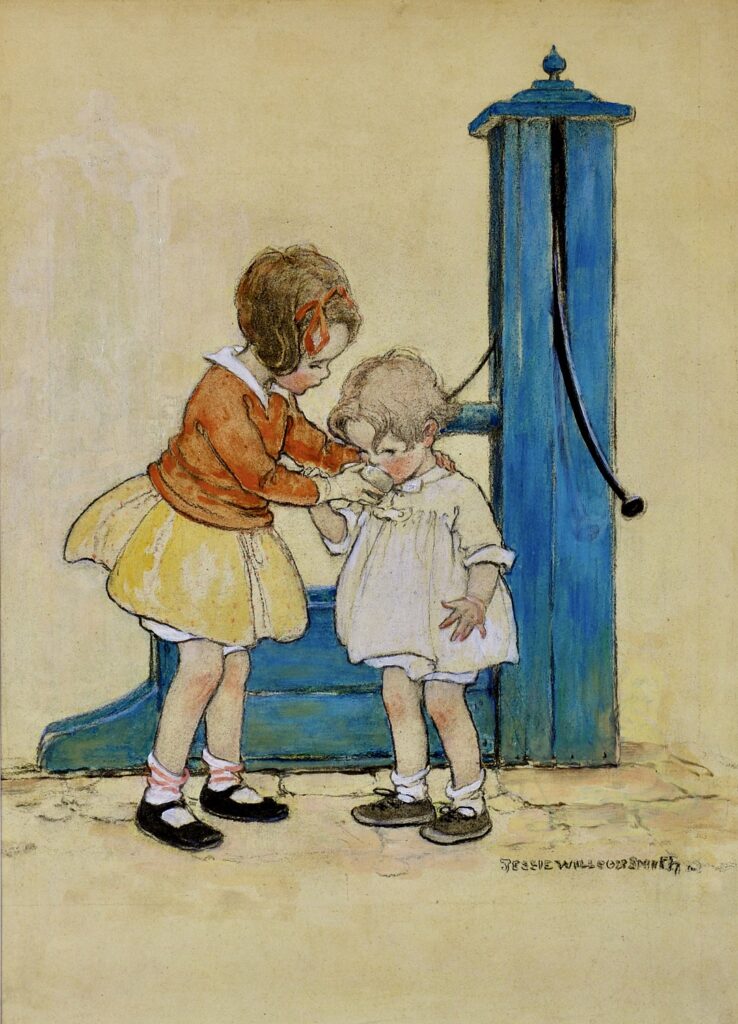
Elizabeth Shippen Green
Much like Jessie Willcox Smith, Elizabeth Shippen Green was celebrated for her idyllic scenes portraying an idealized version of childhood and motherhood. Her work appeared in children’s books and in serial stories for leading publications like Women’s Home Companion and St. Nicholas. Green was the first woman staff member for Harper’s Weekly and she signed an exclusive contract for Harper’s magazine in 1901, which would remain in effect for twenty-three years.
Violet Oakley
Violet Oakley began her career as an illustrator, though she is best known for her stained glass window designs and mural paintings. She gained recognition for a series of murals entitled The Founding of the State of Liberty Spiritual, produced between 1902 and 1906 for the Governor’s Reception Room at the Pennsylvania Capitol building in Harrisburg. In the frieze, Oakley presented thirteen instances of religious strife during the English Reformation, culminating in the exodus of the Quakers to Pennsylvania. She strove to glorify the principals of religious tolerance and social freedom that comprised William Penn’s dream for the Pennsylvania colony. Over the next twenty-five years Oakley would go on to produce a total of forty-three murals for the state Capitol, including for the Senate Chamber and the Supreme Court Chamber.
In 1914, Oakley took over the main building at Cogslea to work on her large-scale mural work. Smith and Cozens moved to “Cogshill,” a new home on the property where they would live together until Smith’s death.
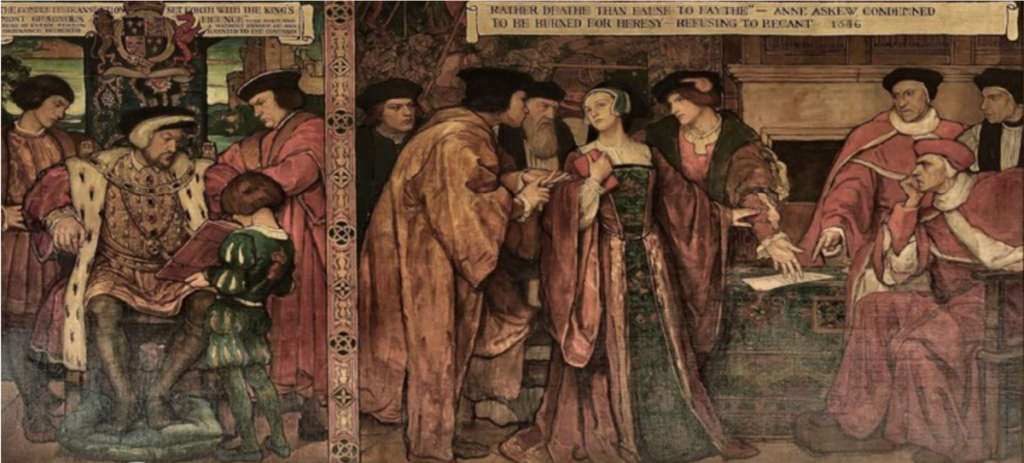
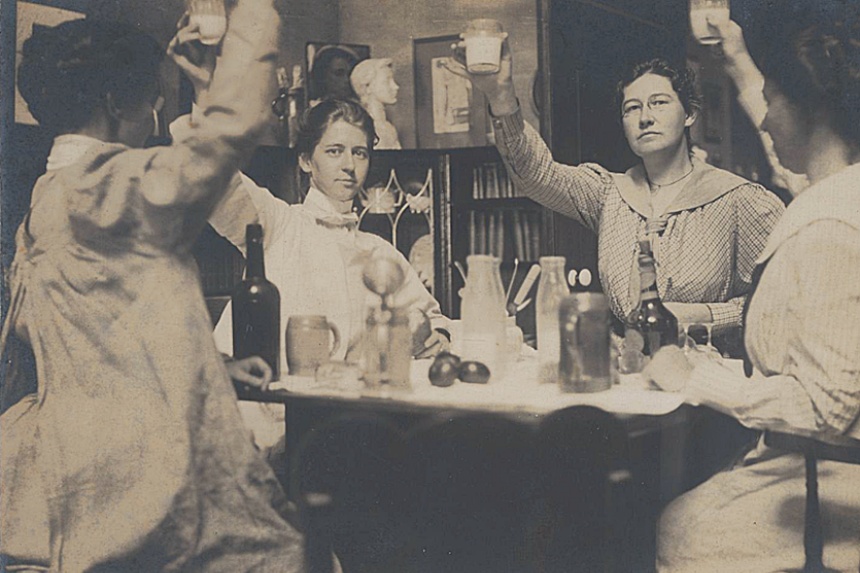 Elizabeth Shippen Green, Violet Oakley, Jessie Willcox Smith, and Henrietta Cozens, circa 1901. (Image Credit: The Smithsonian Institution Archive of American Art)
Elizabeth Shippen Green, Violet Oakley, Jessie Willcox Smith, and Henrietta Cozens, circa 1901. (Image Credit: The Smithsonian Institution Archive of American Art)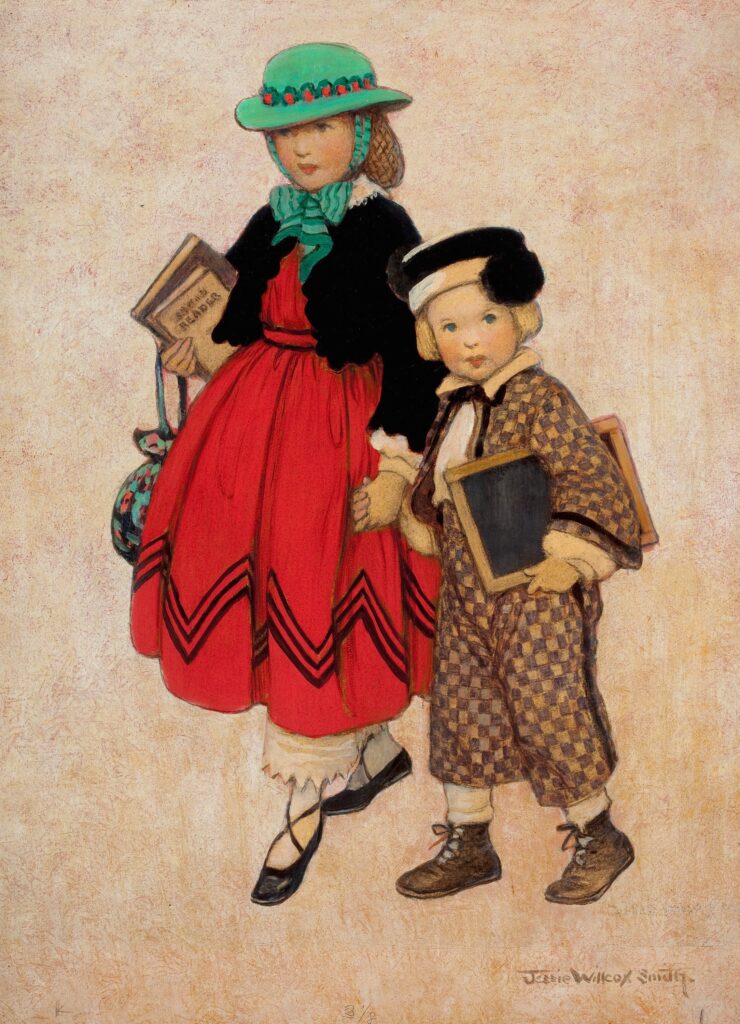 Jessie Willcox Smith. Two Little Girls. Original cover for Good Housekeeping, published September 1924
Jessie Willcox Smith. Two Little Girls. Original cover for Good Housekeeping, published September 1924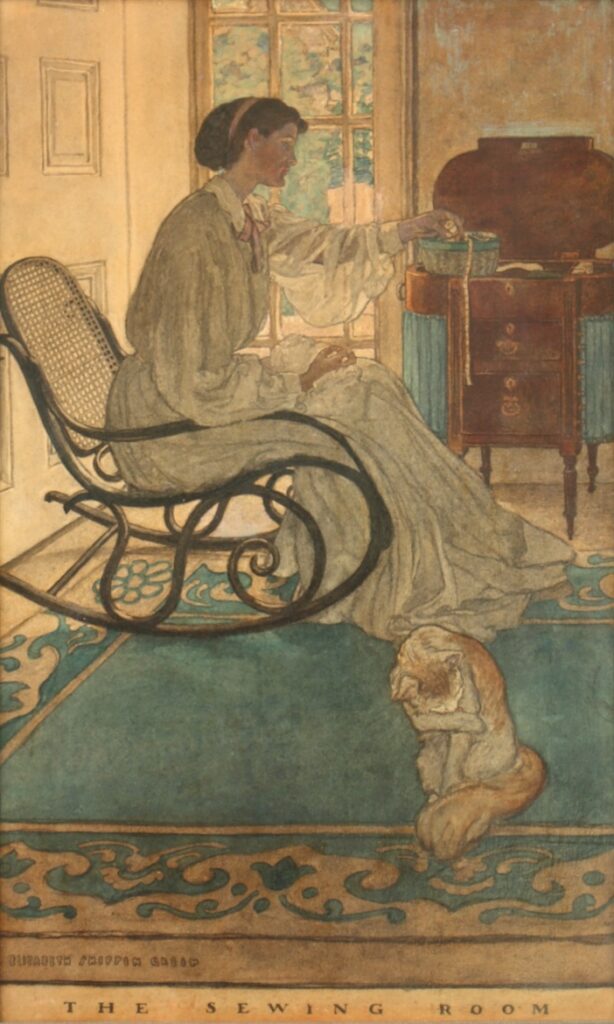 Elizabeth Shippen Green. The Sewing Room. Original illustration for Harper’s Monthly, published December 1905
Elizabeth Shippen Green. The Sewing Room. Original illustration for Harper’s Monthly, published December 1905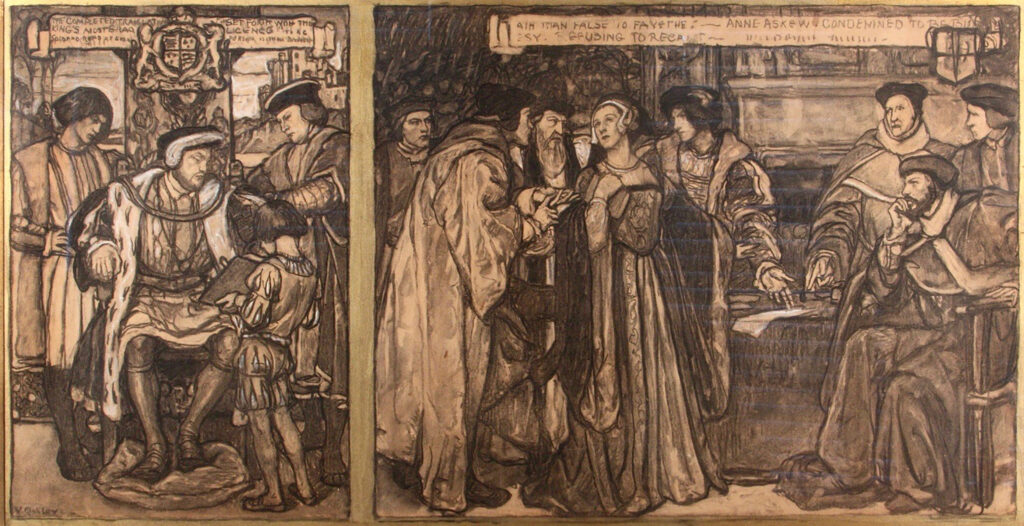 Violet Oakley. “The Answer to Tyndale’s Prayer” and “Anne Askew Before the Lord Chancellor.” Preliminary study for mural series “The Founding of the State of Liberty Spiritual” for the Governor’s Reception Room in the Pennsylvania State Capitol Building, circa 1904
Violet Oakley. “The Answer to Tyndale’s Prayer” and “Anne Askew Before the Lord Chancellor.” Preliminary study for mural series “The Founding of the State of Liberty Spiritual” for the Governor’s Reception Room in the Pennsylvania State Capitol Building, circa 1904